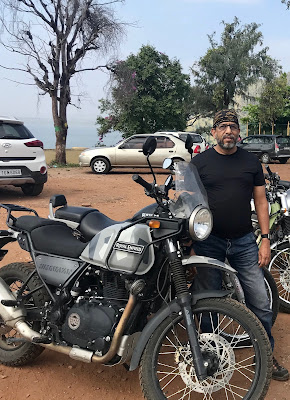Deepavali Reflections: King Bali and the Spirit of Righteousness
Deepavali in South India is celebrated over four vibrant days, each carrying deep cultural and spiritual meaning.
The first day is Neeru Thumbuva Habba, the ritual of water purification. We clean the vessels used for storing water, refill them with fresh water, and worship Ganga maatha , the divine embodiment of water.
The second day, Naraka Chaturdashi or Narakasura Samhara, marks the destruction of the demon Narakasura by Lord Krishna—a reminder of light prevailing over darkness.
The third day brings Deepavali Amavasya.
Almost a month before this we would have celebrated Mahalaya Amavasya (during Dasara time). That is somewhat akin to a spiritual reflection day like Halloween in the West. We would have remembered our ancestors and offer prayers for their souls.
However, this amaavasya transforms into Lakshmi Pooja, when households worship the goddess of wealth and abundance. Bursting of firecrackers in a big way that evening is the highlight.
One cherished childhood memory of mine revolves around the Ganga Abhyangana Snana, the sacred oil bath on Naraka Chaturdashi morning. My mother would place seven drops of castor oil on my forearm, reciting the names of the seven Chiranjeevis (immortals): Ashwatthama, Bali, Vyasa, Hanuman, Vibhishana, Krupa, and Parashurama. She would then blend the drops and apply the oil on my head as a gesture of blessing.
Even as a child, I found it fascinating that Bali & Vibhishana, asura kings—were among these immortals, invoked for their blessings and revered for their virtue.
Remembering King Balindra
On Bali Padyami, families in parts of Karnataka and Maharashtra create beautiful rangolis and construct tiny forts symbolising King Bali’s palace. I remember watching our Maharashtrian neighbor make these decorations and calling them “Bali Raja’s fort.” The belief is that the noble king visits his people on this day to see them happy and prosperous.
That always made me wonder—who exactly was King Bali? If he was good and virtuous, why was he banished from his kingdom? Wasn’t he an asura, and therefore, supposed to be a “villain”? The answers revealed a story far deeper than simple good versus evil.
The Story of Mahabali Chakravarthy
Bali Chakravarthy (Mahabali or Maveli), the grandson of Prahlaada (yes, the same Bhakta Prahlaada, who comes in the Narasimha avataara period) was a mighty and righteous ruler. Though born into the asura lineage, he upheld truth, generosity, and justice beyond compare. His reign was marked by peace, prosperity, and equality—no one suffered, no one lied, and no one went hungry.
When his empire expanded to the heavens, the devas feared losing their realm and sought Lord Vishnu’s intervention. Vishnu then incarnated as Vamana, a dwarf Brahmin, and requested three steps of land during Bali’s grand yajña. When Bali wholeheartedly agreed, Vamana transformed into Trivikrama, the cosmic form, and covered heaven and earth in two strides. With nowhere left, Bali offered his own head for the third step. Act of offering his own head for Vamana’s third step is seen as the ultimate expression of surrender (ātmanivedanam or sharaNaagati) to achieve prapatti or salvation.
Bali was granted immortality and made ruler of "Sutala" (different nether worlds like athala, suthala, paathaala), a world more splendid than heaven, with Vishnu himself guarding his gates. He was also given the boon to visit his people once each year—a day celebrated as Onam in Kerala and Bali Padyami elsewhere.
Why We Still Revere Bali
King Bali is remembered not for defiance but for his unwavering righteousness. His story highlights that dharma transcends labels of “deva” and “asura.” The lines of the Onam song “Maveli Nadu Vaneedum Kalam” capture his just and equitable reign—a golden era of virtue and harmony.
In essence, Mahabali was not punished for ambition but rewarded for selflessness and truth. His humility transformed what seemed like defeat into divine elevation.
A Reflection
Sometimes, what appears "negative" on the surface may be a step in the universe’s quest for "balance". As long as one walks the path of righteousness, every act—however misunderstood—becomes a doorway to higher grace. Just as King Bali’s seeming fall led to eternal glory, so too our trials may hold unseen blessings.














Beautifully explained♥️
ReplyDeleteThanks
DeleteGood morning sir, the last reflection is fantastic. It is NSM Signature. Reminds us of the misunderstandings etc. very nice 👍
ReplyDeleteThanks Shankaranna. Hence purandara dasaru has said ಆದದ್ದೆಲ್ಲ ಒಳಿತೇ ಆಯಿತು
DeleteNice.One doubt.Deepavali amavasya is not celebrated as Mahalaya Amavasya which comes at the end of pitrupaksha before beginning of Navaratri.Balipadyami is celebrated in a different way in South Kanara.It is a day when all cows are worshipped ( ಗೋ ಪೂಜೆ) Also they offer pooja to their farms to please Balindra
ReplyDeleteThanks for pointing out the error. Will edit it
DeleteNicely blog as always mohan. Your blog reminds me of my my child hood days when we used to get up in the early morning and my mother used to apply oil and perform Arathi with the whole al family in attendance. This ritual continued for some years after marriage. These are nostalgic memories to cherish.
ReplyDeleteSo true
DeleteVery nicely penned Guruwe As always ...Deepavali habbada Shubhadhayagalu
ReplyDeleteYoga here
DeleteThanks Chandru. ತಮಗೂ ಕೂಡ ಶುಭಾಶಯಗಳು
DeleteAbsolutely beautiful narration and renderance NSM sir. It's the reminder to us to keep faith in our culture, learn lessons and walk through our life journey with values. Thank you so much for enlightening us time and again. Happy Deepawali festival celebrations.
ReplyDeleteThanks Badari
Delete🙏👌✨️✨️🎆
ReplyDeleteThanks Anantha
DeleteWishing you all Happy Deepawali. Nice explanation of Bali & Vamana avatara
ReplyDeleteThanks
DeleteGood explanation of the festival.
ReplyDeleteMy mother is to build the fort with cow dung and decorate it with Marigold flowers. If I remember correctly, this is the only festival where Marigold was used.
Thanks Datta. Yes it was made with cow dung and marigolds
DeleteDeepavalli shubhashayagalu, Mohana. That was a wonderful explanation. Our childhood memories remain so vivid because of our parents' spiritual and holistic approach to our upbringing. I truly hope the next generation can imbibe some of these beautiful traditions and values.
ReplyDeleteThey will be what we feed them with. Humans are tribal in nature. Tribal knowledge passed on generations to generations still matters. Thanks Uday.
DeleteWhat an enlightenment and extraordinary study with a detailed narration.
ReplyDeleteI admire ur ability and the skills, knowledge 👏.
This comment has been removed by a blog administrator.
DeleteThanks
DeleteTwo interesting things,
ReplyDeleteThe fort you are talking about has morphed into shivaji maharaj fort in marathi circles , at least here in USA
A friend of mine does workshop to build fort starting from navaratri with aim of finishing by deepavali.
Second , raksha bandhan story is connected to this narayana waiting at the sutaka guarding Bali s palace.
Lakshmi starts missing narayana in vaikuntha and after vishnu refused to return home in spite of pleadings from lakshmi, she decides come down as commoner woman to sutala and starts seeing Bali in his palace,
She ties rakhi on rakshabandhan to bali and bali pleased with her tells her to ask for boon.
She reveals herself and ask narayana to be relieved of his dwarapalaka duties
(Paraphrasing here), both return to vaikunta
Wow! That’s an interesting take Madhu. The part of the Raksha Bandhan is a nice twist. Never knew this. Thanks.
DeleteExcellent compilation Mohan
ReplyDeleteThanks
DeleteFinally got to read. You connecting purana together so nicely makes one wonder about those whose attitude is to focus on the differences rather than the similarities. This needs to be shared
ReplyDeleteI remember being woken up early for the oilbath.
My feeling is that cracker busting could have been a community activity instead of being an individually performed.
Thanks Nidhi uncle. One version of the firecracker bursting is that it releases enough Sulphur into the atmosphere and that could be a pesticide in the rural areas for this season. Again.. something that I heard and have not verified.
DeleteSir. Super story telling. It was Nostalgic and at the same time going back to the Puranas is truly amazing. It was a true Diwali treat to read your Blog.
ReplyDeleteThanks KS
Delete